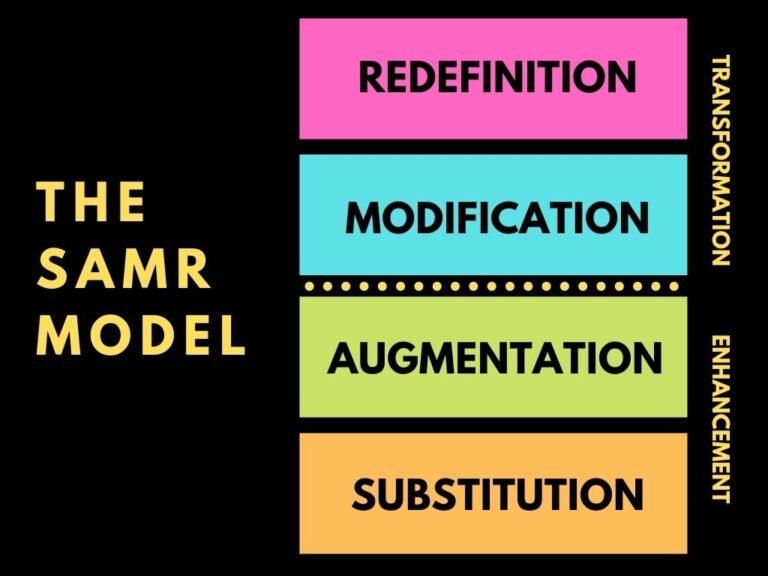The SAMR model was introduced to me as framework which helps educators reflect on how technology is being used to support learning.
Created by Dr Reuben Puentedura, SAMR is an acronym for:
- Substitution
- Augmentation
- Modification
- Redefinition
I’ll be using the example of a English literature class in this write up to illustrate how it can be utilized.
Breaking down the SAMR Model
In substitution, technology acts as a direct tool substitution with no functional change. For example, instead of a physical copy of Macbeth, students read an e-book.
In augmentation, technology as a direct tool substitute but with a functional improvement. This would be an e-book copy of Macbeth that allows them to highlight, take notes and access a dictionary to look up the meaning of words within the e-book reader.
At the modification level, technology allows for significant redesign of the task. In this instance, the assignment for students could be a collaborative project where they co-write a character analysis of the three witches in Macbeth using Google Docs and record an audio podcast that will be shared with the class.
At the redefinition level, technology allows for the creation of a new tasks that were previously inconceivable. An example off the top of my head would be to use technology to create a complex interactive map of all character interactions with the witches and record reenactments of those interactions.
Enhancements vs Transformation
Now if we look at the model, we can draw a dotted line across the middle, separating the substitution and augmentation from the modification and redefinition.
The substitution and augmentation levels are viewed more as enhancements whilst the other two are more transformational in terms of how technology supports learning.

Personal Thoughts on the SAMR Model
Now here’s my reflections on the SAMR model.
The good thing about the model is that it’s a simple guide which is simple to understand which allows educators to easily identify how they can incorporate technology into their lesson plans to support learning.
The bad thing is that there seems to be a lack of peer reviewed literature on the SAMR model. Most of the papers I’ve reviewed seems to cite the Dr Reuben Puentedura’s personal blog in the references.
So we’ve covered the good and the bad, now let’s move on to the ugly. Given the absence of context, its possible to reach the redefinition level without making any significant improvements to learning.
And that’s my quick review of the SAMR model.
Have you used the SAMR model? I’d love to hear about how you’ve used it.
